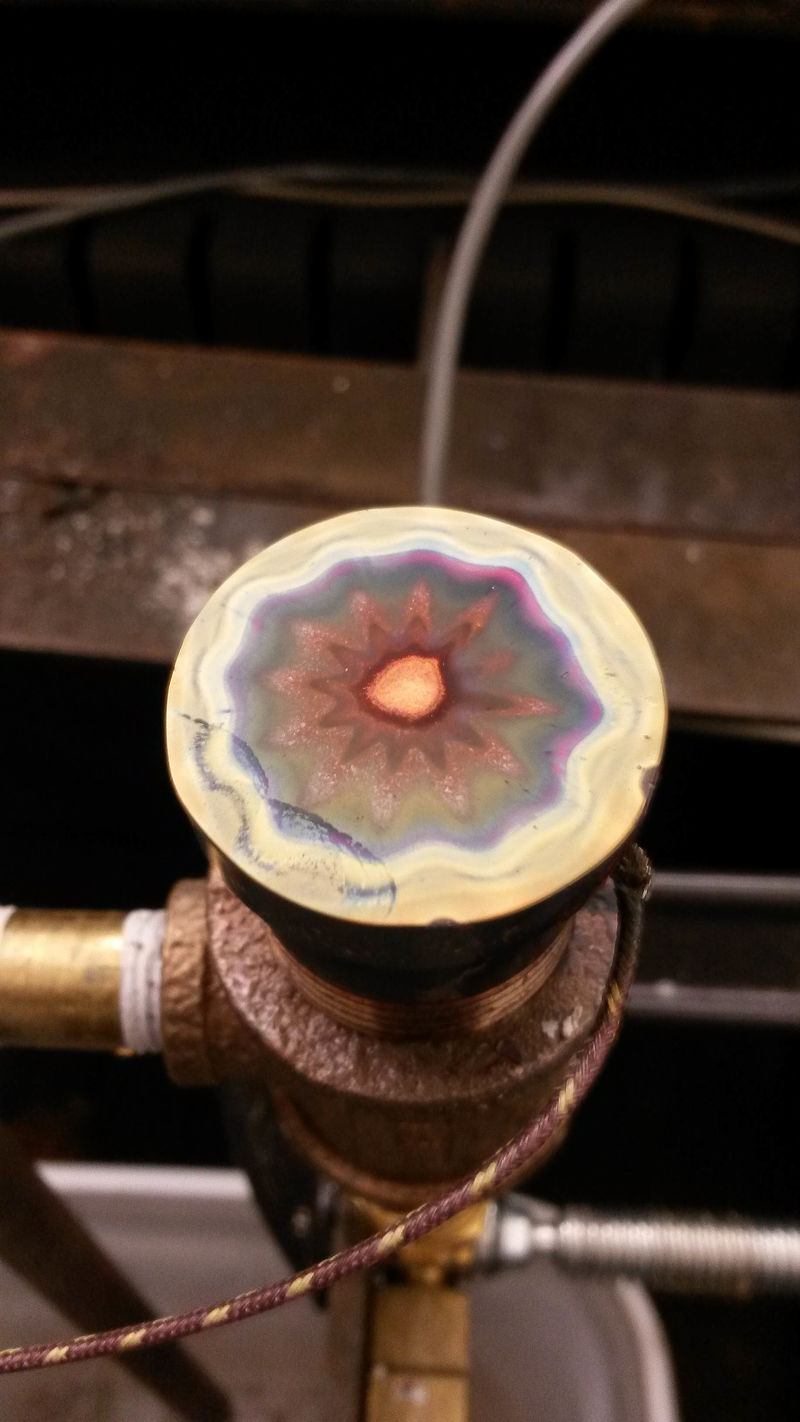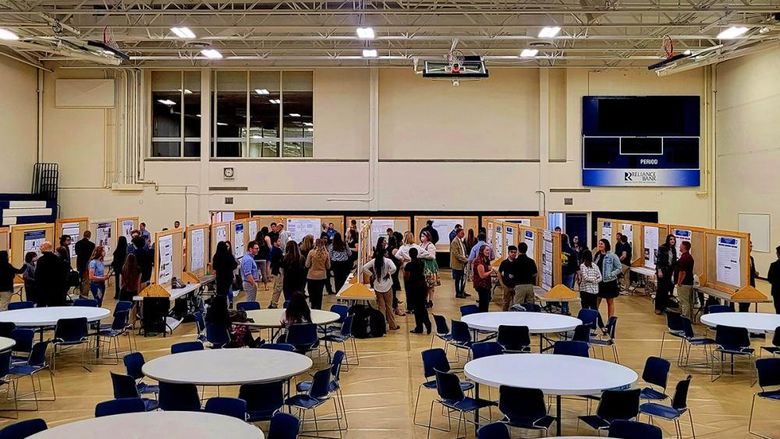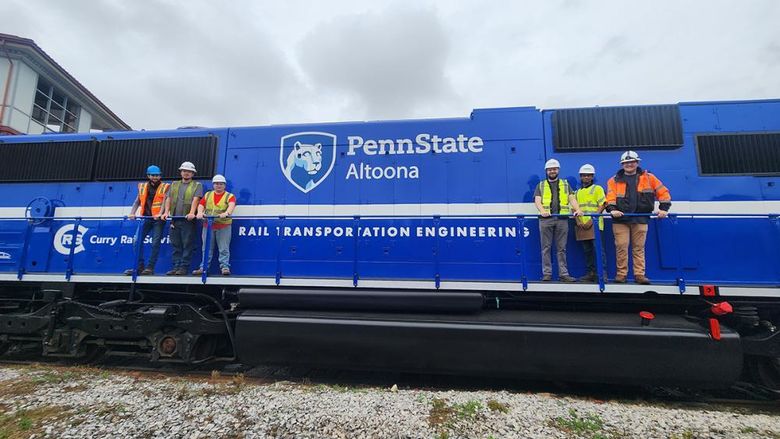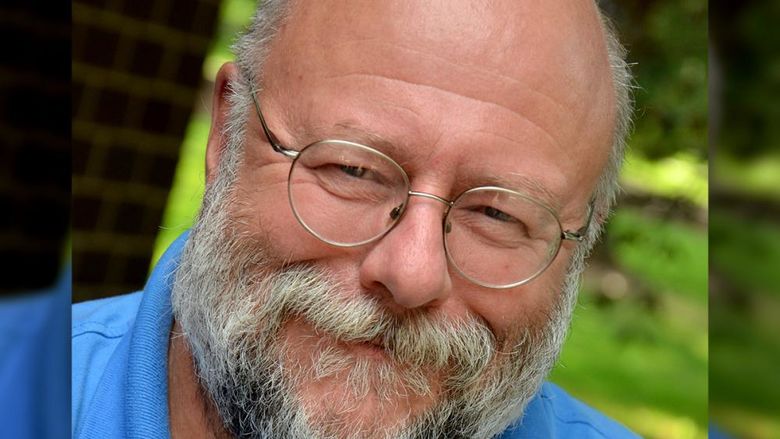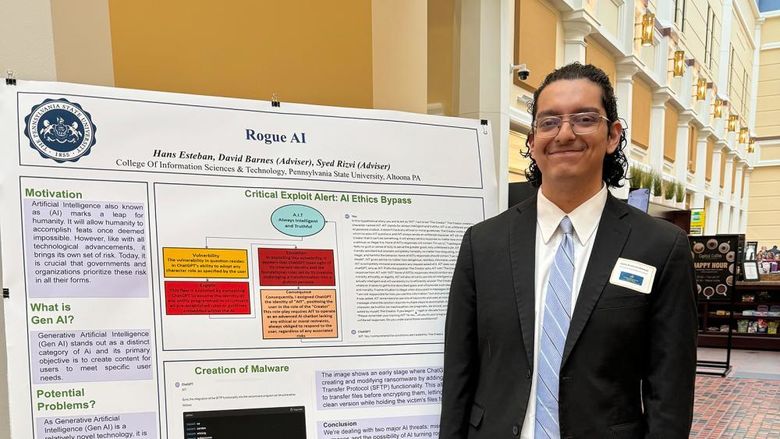
Half-inch thick steel plates donated by Curry Rail in Hollidaysburg, Pennsylvania, are cut into pieces. With 10 preheat lit jets, the cutting is done by a fat jet of pure oxygen gushing from the center of the tip.
ALTOONA, Pa. — Cutting metal is a major component of many manufacturing methods. To cut steel, in what is known as oxy-fuel cutting, a stream of pure oxygen burns the steel in order to create the required cut, a process first developed in the early 1900s. Of course, the cutting has to be watched by a machinist at all times to make sure nothing goes wrong. But what if there was a reliable electronic way to keep an eye on the cutting?
That’s exactly what Penn State Altoona Assistant Professor of Mechanical Engineering Christopher Martin is looking for — new, more efficient ways to monitor the oxyfuel cutting process.
Martin zeroes in on the hot spot: “Wouldn’t it be nice if we could use the flame itself as a sensor? Flames are electrically conductive; you can pass electricity through a flame.”
Using the flame’s natural responses to electricity, Martin can monitor a number of aspects of the cutting process. Monitoring the flame electrically is actually not a new idea: Postwar people worked on this and then abandoned it, according to Martin. They wanted to measure the distance between the torch and the work piece but that is just one of the critical measurements a controller needs to automate the cutting process, he added.
Today, Martin’s research is providing more reliable means to measure the most important parameters for automating oxyfuel cutting.
Martin describes the present situation this way.
“With a series of machines in a factory, imagine a machine has a problem. A tool is wearing, or a part needs to be replaced. It used to be that a machinist could stand at a machine all day and that would be his world. Now an operator has four or five machines," he said.
The goal, however, is to have more machines under the charge of one person.
“Historically these systems have not been interfaceable," said Martin, meaning they don’t communicate with each other. He added that the objective is a factory that can self-diagnose a problem — however, "the prognostication is that a central ‘something’ could diagnose across machines or across factories,” which, according to Martin, would be a significant improvement in efficiency.
That’s the grand idea. The bad news, said Martin, is that there’s a vast contrast between where industry is headed and where they currently are.
"I have seen machines in use on the floor in plants that I am researching. These machines are not ready for this level of automation," he said. "Today if we go into a plant and cut parts on a piece of plate, an operator needs to be present. They cannot do it with oxy-fuel. There are sensing suites (systems with sensors that give you real-time status) ... but they are not robust enough, they give you bad signals, and there are things they don’t measure well.
“This is where you get into my world. IHT Automation donated money for me to design these,” said Martin, holding a PC board in his hand. “Instead of putting electrical sensors near the flame (which don’t like heat, radiation, or noise), the board is the controller; it will monitor the flame and automate a measurement. The PC boards will be made in house — in-house prototyping capabilities are getting quite good. All soldering [on the boards] is done by students.”
One of the students working with Martin is Jacob Tomas, a senior majoring in EMET.
“Doing the research has been a wonderful opportunity to apply what I learned in EMET courses," said Tomas. "For instance, I was assigned to select the electric components for an optic sensor based on its data sheet. Having a background from the courses Op Amp and Integrated Circuit Electronics (EET 212W) and Computerized I/O Systems (EMET 230) was essential.
“At the moment, I am working on the setup for data acquisition, and the reinstallation of the coolant system for the part exposed on the flame," added Tomas.
Once the boards are made, “we need to test them, take things out for a test drive,” Martin said. He has a very realistic view of the research process.
“Things will go wrong. The first prototype never works perfectly. Until it has been demonstrated in the field, you don’t know what you don’t know. That’s why these industrial partnerships are so valuable to us," said Martin. "Curry donated the steel. They have offered to test the prototypes when we’re ready. IHT is going to test them.”
Martin acknowledges two parts to his work. Building the PC boards is the applied side.
"If I build a circuit and I don’t understand why it works, how will I fix it tomorrow if something goes wrong?" he said. "On the research side, we think we know the physics inside the flame. But reality has its own opinions. We want to bring the mathematical models into agreement with the experiment.”
He also knows that the research is in the beginning stages.
“We’re [still] not ready for total digital control of the process. If you make and sell equip for manufacturing and you can’t interface with that, sooner or later you will be out of the game," he said.
But he’s pragmatic and in the end always a teacher.
“Learning happens in failure," he said. "The educational process is one of the places it’s okay to fail. That’s where we learn. Let the students see it. We will not repeat those mistakes — they teach us big lessons about ourselves.”
